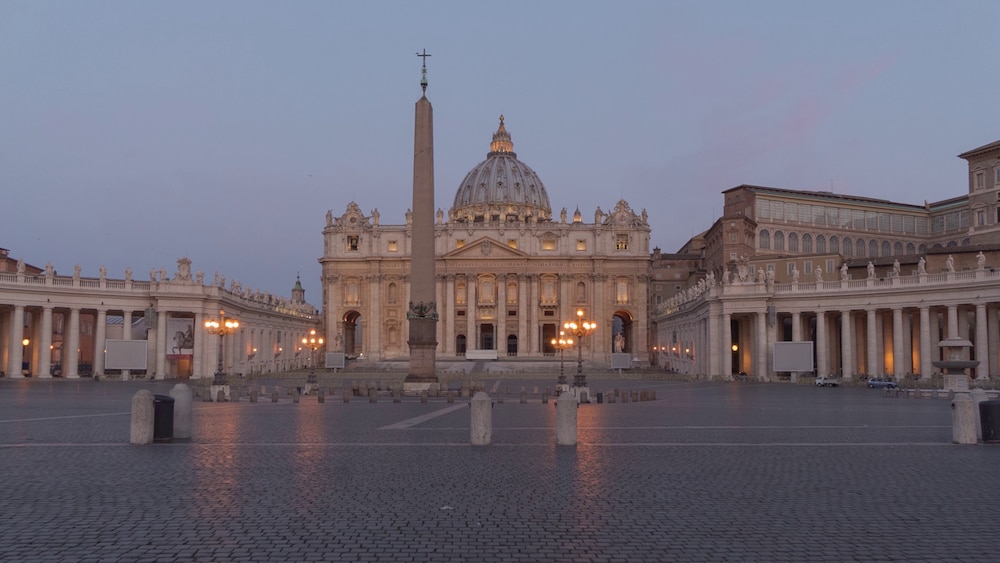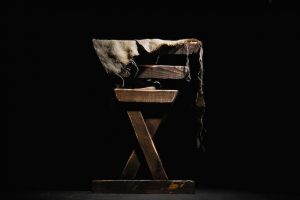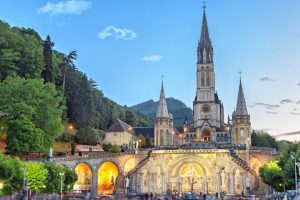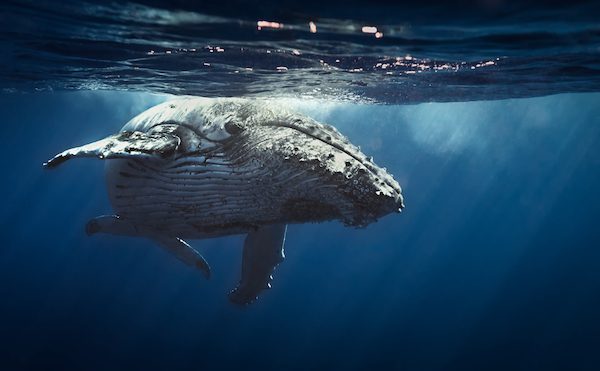
Waqar Ahmad Ahmedi, UK
‘Throughout his life, Pope Francis sought to serve the poor and vulnerable, demonstrating immense sympathy for those suffering under the heavy weight of warfare, persecution, and injustice.’
These are the words of the Fifth Caliph and Worldwide Head of the Ahmadiyya Muslim Community, Hazrat Mirza Masroor Ahmad (aba) whilst expressing his condolences upon the passing of Pope Francis. Hazrat Mirza Masroor Ahmad (aba) further stated:
‘He was a man of compassion, humility, and faith who strived to build bridges between people of different faiths and beliefs.’
The demise of the leader of the largest body of Christians anywhere as well as one of the oldest international institutions, with a baptised membership of more than one billion people, represents a significant turning point for Catholics around the world – as does what happens next.
Since the death of the Pope there has been renewed interest in the award-winning film Conclave, released only last year, about the process of a papal election. Whenever a Pope passes, preparations for choosing the next one are immediately set in motion. Conclave (from the Latin ‘with a key’, denoting a locked room) is a secret meeting in the Sistine Chapel, Vatican City, involving cardinals – the Church’s most senior clergy – who have responsibility for the election of the new pontiff.
Attention now turns to the real conclave which begins today, 7th May 2025. The College of Cardinals is now sequestered and must not communicate with anyone outside the process.
The conclave commences with a special mass, a procession of the cardinals into the Sistine Chapel, an oath to keep the upcoming proceeding a secret, and the sealing of the doors. Cardinals are surrounded by the frescos of the Renaissance artist Michelangelo, including the ‘Last Judgement’ depicting Jesus’s second coming and final verdict at the end of times, reminding them of the enormous duty entrusted to them and their ultimate accountability before God. In the meantime, people will gather in St Peter’s Square in prayer and anticipation of the outcome.
Any Catholic man who has been baptised can be a candidate for the papacy. More commonly, he is selected from among the cardinals, and most popes so far have been European. Of the 266 popes chosen to date, 217 have been from Italy. Pope Francis, who was Argentine, was the first pontiff to hail from Latin America and the southern hemisphere. More than half of the 135 cardinals eligible to vote this time are from outside of Europe. They must all be below the age of 80 years.
Cardinals cast their votes on a paper card stating in Latin ‘I elect as Supreme Pontiff’. They cannot nominate themselves. The folded ballots are dropped into a chalice and each vote is read aloud by one of three scrutineers and counted. All ballots are then burned in the chapel stove along with a chemical to produce either black smoke for an unsuccessful vote, or white smoke to declare that a new Pope has been chosen. The smoke is released via a chimney visible to the crowd waiting outside.
For a new Pope to be elected, there must be a two-thirds majority. Until this happens, multiple votes may have to take place daily. If no decision has been reached after a third day, the cardinals can break for prayer. If there is still no decision after 33 rounds of voting, a run-off will take place between the two most voted candidates.
Some conclaves have lasted weeks and months, but following some rule changes over time, the average length since the beginning of the 20th century has been three days. The elections of both Pope Francis and his predecessor Pope Benedict XVI lasted two days.
Once elected, the Pope must formally accept the job in front of the College of Cardinals. The cardinals approach him one by one to swear their allegiance. As per tradition, he can also state his preferred papal name, usually the same as a predecessor they have admired or a revered saint. Pope Francis wanted to be named after St Francis of Assisi, renowned for his concern for the poor, and whom he called “the man of poverty, the man of peace, the man who loves and protects creation”. He must also choose his papal attire, which symbolises how he sees the role (Pope Francis opted for a simple white cassock and declined to wear the elaborate red cope with ermine). He is also given a zucchetto (skull cap) and red shoes. Three sets of vestments in different sizes will have been made by Vatican tailors in advance.
Following this, the dean of the cardinals will declare to the public: ‘I announce to you with great joy: ‘We have a Pope.’
The pontiff will then appear on a balcony overlooking St Peter’s Square and be seen for the first time by the world.
Pope Francis’s championing of peace, equality and justice will be seen to be his greatest service and legacy. Many will be praying that his successor builds upon the same.
About the Author: Waqar Ahmad Ahmedi is Head of Religious Studies at a school in Godalming in Surrey, UK. He also serves on the Editorial Board of The Review of Religions




I really appreciate the thought and detail put into this article! I’m especially glad you included the link to His Holiness’s Statement of Condolence Video and provided insight into the process of electing the next pope. Since your article is so well-written and rich with information, I wanted to share a few additional interesting facts I found online that readers might enjoy.
Interesting Facts About Papal Conclaves
– Longest Conclave in History: The longest papal conclave lasted nearly three years—from April 1292 to July 1294—before electing Pope Celestine V.
– Strange and Sacred Events: Conclaves have seen divine doves, swarms of bees, and unexpected twists influencing the final decision.
– Recent Elections: Pope Francis was elected in 2013 on the fifth ballot, while Benedict XVI won in 2005 on the fourth ballot.
– Secret Ballots & Oaths: Each cardinal writes their vote on a paper ballot, folds it, and places it in a chalice. Before voting, they take an oath of secrecy, swearing not to reveal any details about the election process.
– Strict Isolation & Electronic Surveillance: The Vatican sweeps the Sistine Chapel for hidden microphones and cameras before each conclave. Cardinals must surrender all electronic devices, and signal jamming equipment is used to prevent outside communication.
– Youngest & Oldest Popes: The youngest pope ever elected was Pope Benedict IX, who was around 20 years old. The oldest was Pope Clement X, elected at 79 years old.
– One Meal a Day Rule: If a conclave drags on too long, cardinals may be restricted to one meal per day to encourage a quicker decision.
I hope the message of Ahmadiyyat Islam will be conveyed to the next pope, just as it was shared with the last pope, as mentioned in the article from the April 2023 edition of the magazine: Building Bridges: An Ahmadiyya Imam Conveys His Holiness’ Message to Pope Francis by Marwan Gill.